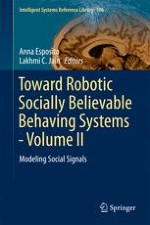2016 | OriginalPaper | Buchkapitel
4. Toward Conscious-Like Conversational Agents
verfasst von : Milan Gnjatović, Branislav Borovac
Erschienen in: Toward Robotic Socially Believable Behaving Systems - Volume II
Aktivieren Sie unsere intelligente Suche, um passende Fachinhalte oder Patente zu finden.
Wählen Sie Textabschnitte aus um mit Künstlicher Intelligenz passenden Patente zu finden. powered by
Markieren Sie Textabschnitte, um KI-gestützt weitere passende Inhalte zu finden. powered by
